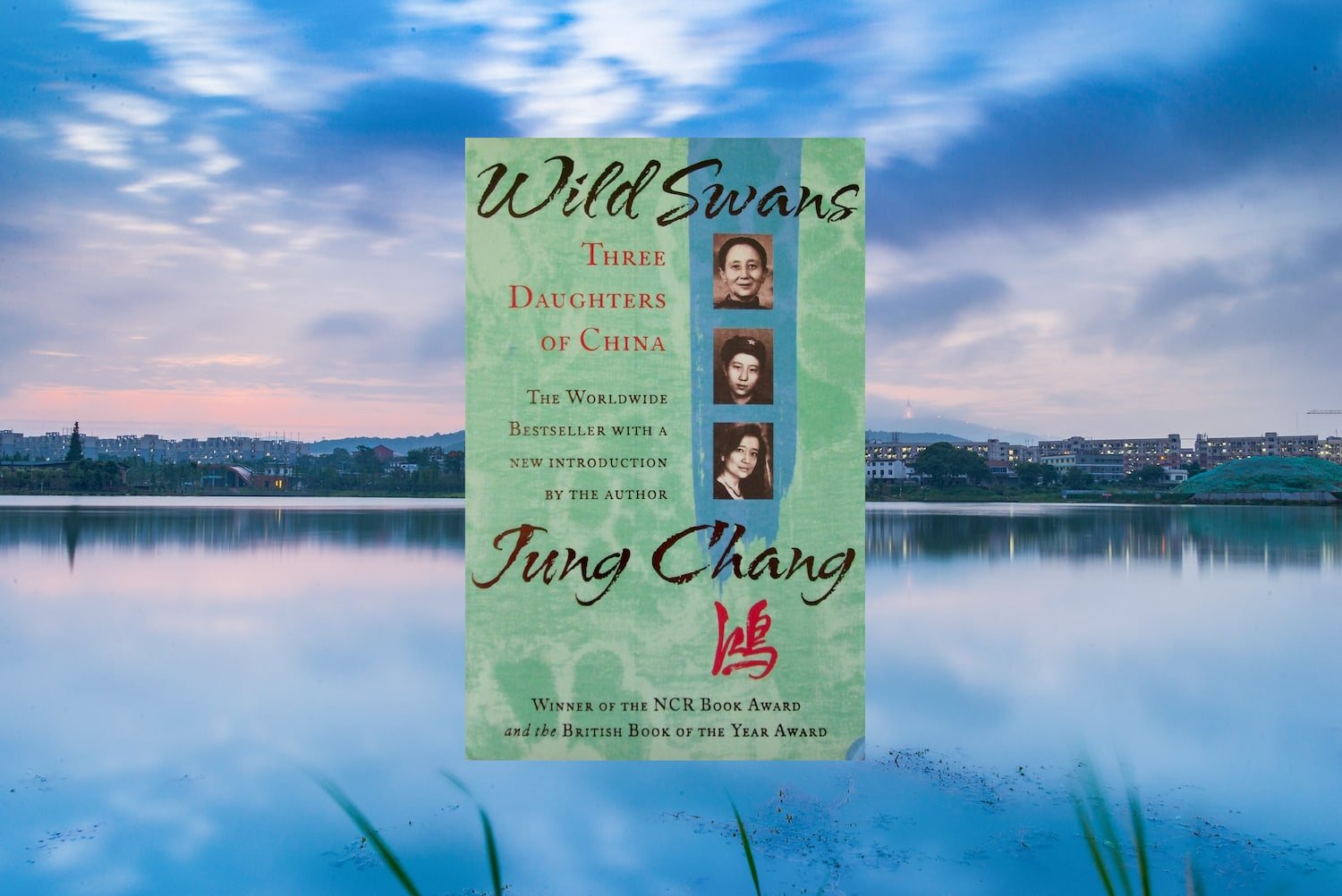An insightful book into China’s 20th century history, its unique narrative being a biography of three distinctively different times, covering periods of great change – economically, socially and culturally – through the tale of three women’s lives. What makes it so potently powerful is that it’s a generational tale of Jung Chang’s family, starting with her grandmother. Its engaging format revealing a country whose history is not widely known, and told from an intimate voice that puts you directly there.
Starting with its first swan, the grandmother Yu-fang, we meet a young girl, who having been left with little option in life, is forced to become a concubine for a warlord. Her house, though filled with luxuries, is more like a prison, with even the servants being feared. Here Jung Chang describes the multitude of rules, of subtexts and meanings to be observed in those times and how the smallest of slip-ups could end in catastrophe. These details are continued into the rites of death at that time, and into the cunning and daring plan of escape as the general lay dying. From this it enters not only the next passage in Yu-fang’s life, one that would lead to influence the next generations, but is a message of perseverance and determination. This is a great strength of Jung Chang’s writings, her historical facts and traits uncover more than just what’s put to paper, but of the depth of people behind these rules, whether in following or disobeying them. One of the most descriptive passages however is of Yu-fang’s bound feet. For a long period in Chinese history, overly-dainty feet were seen as being attractive, the method to induce this torturous; from not only being tightly bound to stop growth but also having a ‘large stone on top to crush the arch.’
In stark difference is the second swan; the mother Bao Qin (later named De-Hong) who, in greater freedom than her mother, became happily overwhelmed by the upsurge in popularity for the Communist movement. Her determination for a greater China leading her and her husband to give everything they had to the cause. The cost; losing a child. Their reward; to become senior officials. However, their unrepressed voices for a better future meant they came into conflict with Mao. Their words expressing criticism of his actions, and which would bring punishment upon themselves.
Because Jung Chang was the daughter of high-ranking officials, in the early decades of communism, she’s able to provide a credible and private account of its political aspirations, of the hopes of thousands that led to its formation. To finally the self-serving interests of those who rule it with an iron fist. In this section I acknowledge my ignorance in that I was completely unaware of China’s Civil War in the 20th Century against the Kuomintang, or of the earlier alliance(s) with them, such as in their fight against the Japanese invasion. However, what strikes as being most memorable is the description of starvation, of not a single grain of rice to be lost, to piles of pots and pans being melted for the Cultural Revolution – signalling the troubling times experienced, and those still to be had.
It is in the third swan; the daughter Jung Chang (and the author), that we hear the narrator in full bloom, her experiences told in the most open of ways; in her personal witnessing of persecutions around her; the country’s poverty; and the silencing of individuals. In her younger years Jung Chang talks of being besotted in her idolism of Mao, but as she grew older she began to ask questions, query opinions and form a view outside of the doctrine –displaying a generation that was beginning to quietly challenge the China around them. An interesting point is the destruction of literature both factual and fiction, to allow for those in power to remould China as they so wished, with even the act of personal writing being banned. It should therefore come as no surprise then that when an opportunity to study abroad arose, she saw a way out and a chance to express herself and the history of China’s most recent decades.
Jung Chang’s book was formed from what she heard and experienced around her, while in the periods set before her life she conducted her investigation in part through family interviews. Additionally there are personal photographs included in the book, covering all three generations and key periods in their lives, this helps add to the personal narrative, whilst also providing a visual guide to the lives of others.
Wild Swans is an (auto)biographical book that’s more than just a personal tale of one family, but tells of a time lived by the country as a whole. China’s hidden decades illuminated with a history that’s both intimate and far-reaching; giving a voice to decades that were silenced. This book could justifiably be a mandated read with its impactful knowledge that’s both observant, intelligent and vast, a narrative that’s highly-descriptive in its prose, and told in such a way that it makes it a downright unstoppable read. But then that would go against a key subject the book conveys time and time again; freedom from the ties of repression – a wish that unites across all the decades in Wild Swans.
Other Notable Works by Jung Chang:
- Empress Dowager Cixi: The Concubine Who Launched Modern China 2013
Book Edition Information:
Publisher: Harper Perennial
ISBN: 0-00-717615-5
Cover Design: Harper Perennial
Presented Edition: 2004 Paperback
Background image courtesy of Vincent Tint on Unsplash











